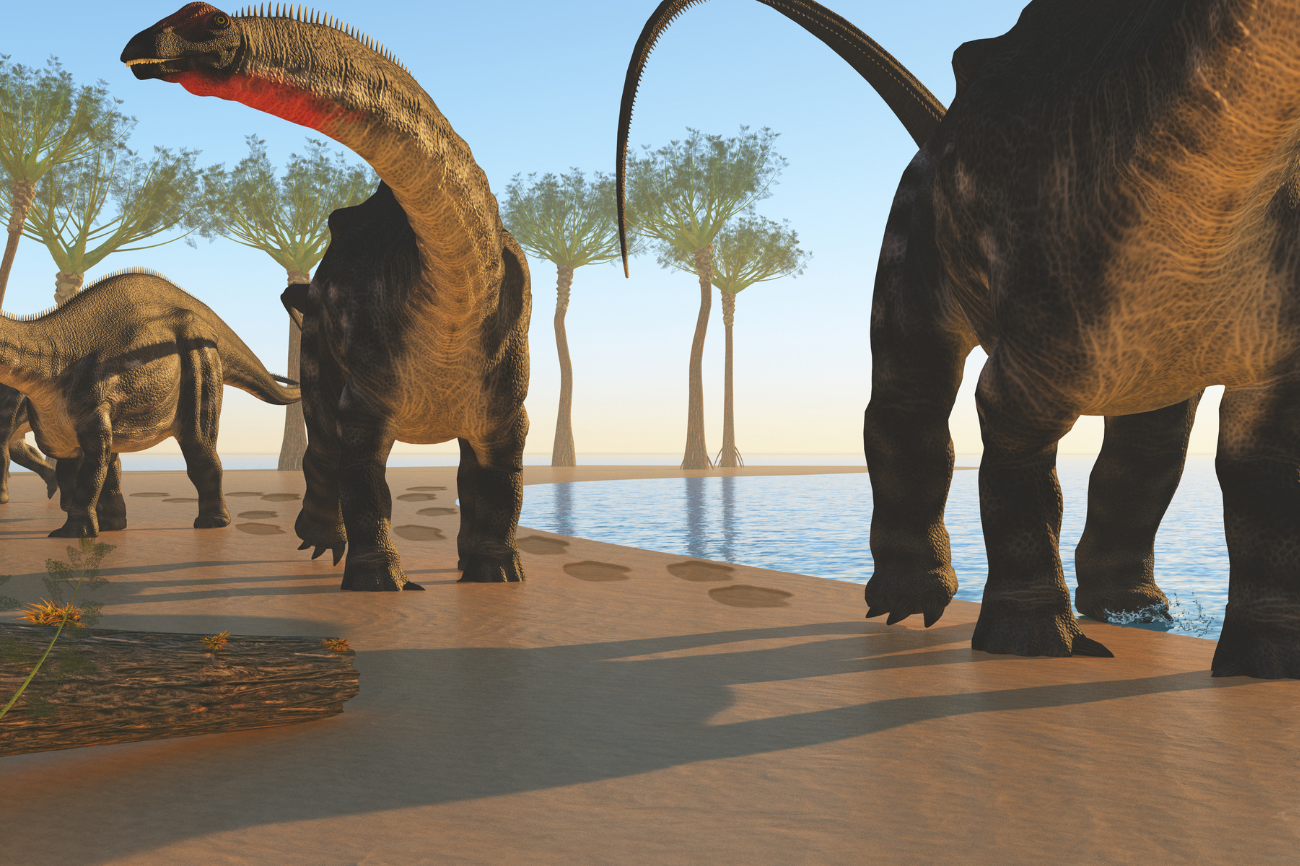Sauropod dinosaurs — from classics like Apatosaurus to the recently-named Patagotitan — were giants of the Jurassic and Cretaceous periods, the largest species attaining lengths exceeding 100 feet and weighing more than 80 tons. And while there are multiple reasons why these reptiles grew to such imposing sizes, paleontologists are still uncovering the biological particulars that allowed these exceptional dinosaurs to exist. Among them, researchers have learned, were cushioned feet.
Paleontologists have been pondering sauropod feet for a long time. Footprints and trackways left by these dinosaurs show how the bottoms of their feet had soft pads on the underside of the toes. Modern elephants have a similar anatomical setup. But it wasn’t until now that experts understood just how important these pedal pillows were to the evolution of truly gargantuan dinosaurs; stress tests of virtual dinosaur bones, detailed earlier this year in Science Advances, highlight how soft tissues helped support the sturdy bones of the sauropods.
Read More: Why Were Prehistoric Marine Reptiles So Huge?
Although experts have extensively studied various parts of sauropod skeletons, paleontologist Andréas Jannel of the Natural History Museum in Berlin and his colleagues write that fossils of complete sauropod feet are relatively rare. Using 3D models of feet from dinosaurs such as Diplodocus, Camarasaurus and Giraffatitan, the researchers used an engineering technique called finite element analysis to study how the presence or absence of a foot pad — as well as different foot positions — affected the mechanical stresses and strains a standing sauropod coped with.
Break a Leg?
Understanding how an animal holds their feet is a complicated task. Some animals, such as bears and humans, are plantigrade. This means the entire foot, from toes to heel, touches the ground. But many other animals, like cats and birds, are digitigrade. They’re effectively standing on tip-toes, like you might do when trying to reach the cookie jar on top of the fridge.
For a long time, paleontologists thought sauropods were flat-footed, plantigrade animals. But Jannel notes that the dinosaurs have an arrangement that is a little strange: The earliest sauropod ancestors were digitigrade. Instead of switching foot postures, however, the pads at the bottom of their feet formed cushions that allowed more contact with the ground. “Sauropods retain a digitigrade foot skeleton but the soft tissue pad makes their foot functionally plantigrade,” Jannel says.
The paleontologists devised new tests to determine whether these foot pads were truly necessary or simply anatomical extras, like the human tailbone. A key consideration of the tests were what experts know as “von Mises stress.” It’s a formula that engineers and other researchers use to determine if a mater

